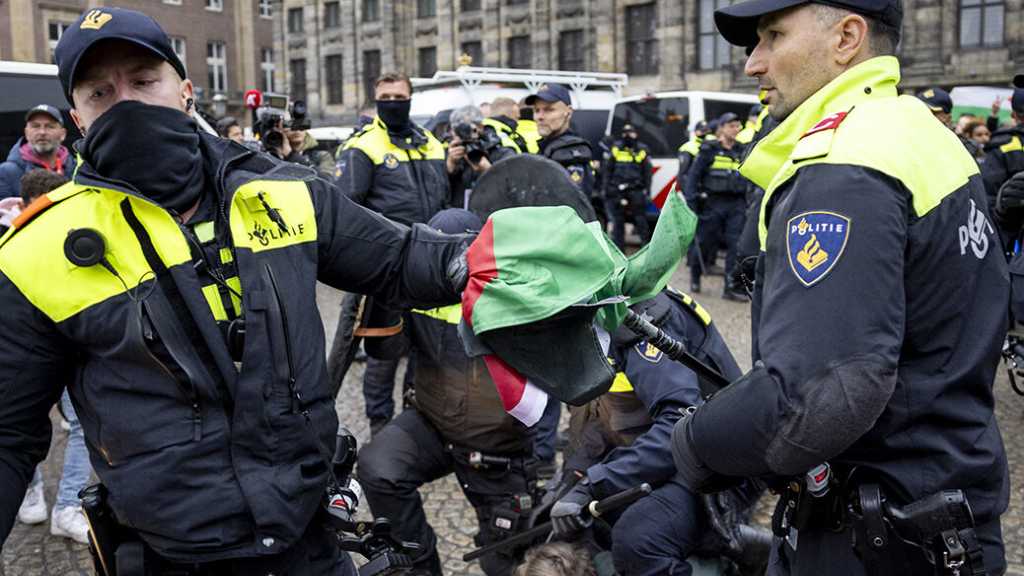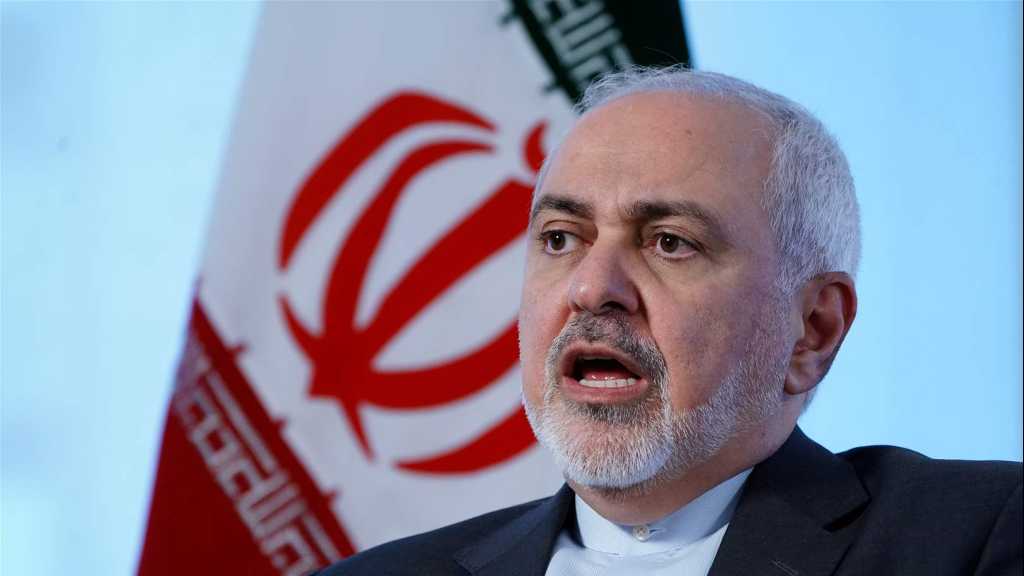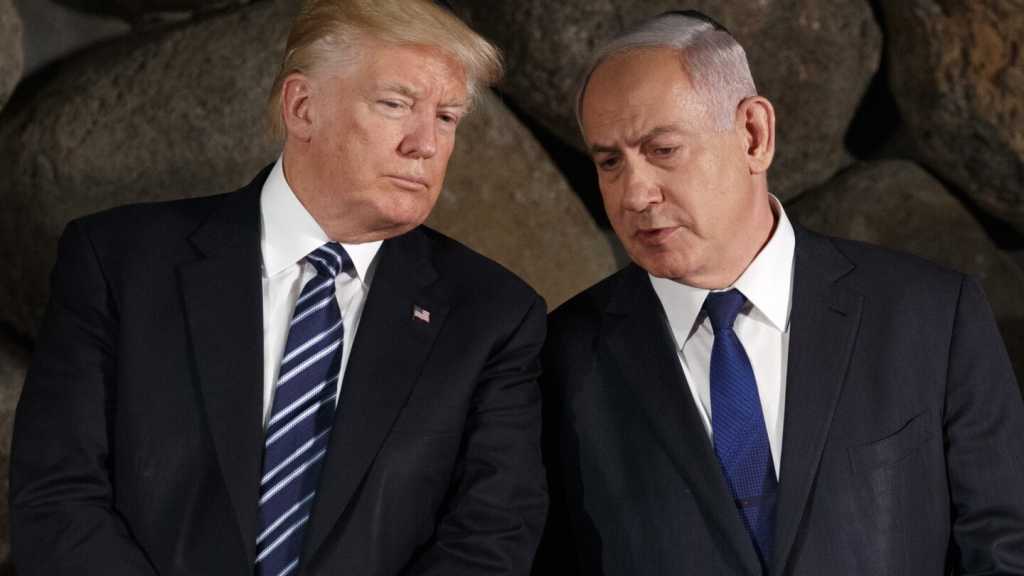Anti-Tank Weapons: Hezbollah Merkava Hunters Will Be Watching For It in the Next War

Al-Ahed Exclusive
A report titled “Hezbollah’s Creative Tactical Use of Anti-Tank Weaponry” by the “Jamestown Institute for Security Studies and Counter-Terrorism Affairs” concluded that “among the many aspects to be investigated is the vulnerability of ‘Israel’s’ powerful armored corps to small, hand-held, wire-guided anti-tank weapons.”
It further stated that “Hezbollah’s innovative use of anti-tank missiles was the cause of most ‘Israeli’ casualties and has given the small but powerful weapons a new importance in battlefield tactics.”
The Merkava, or God’s Chariot, as the “Israelis” call it turned into the gates of hell in July 2006 that were opened by the Islamic Resistance’s anti-tank units.
“In the ‘Israeli’ consciousness, the Merkava tank cannot be defeated by any weapon in the Arab world,” an officer in the Islamic Resistance’s anti-tank unit explains to Al-Ahed News.
In a physical or material comparison, during the occupation, there was no weapon in the Arab armies capable, with technical qualities, of piercing the Merkava tank. For example, Egypt only had Malyutka and HOT, and Syria only had Fagot and Malyutka. We saw the Merkava for the first time on Lebanese soil in 1982. It belonged to the first generation.
*The Merkava is the obsession of the southerners
From the eighties until the nineties, the Merkava played an essential role in protecting enemy soldiers and strengthening their positions in southern Lebanon; the Lahd site, which was two meters high during the first days of the occupation, is now 12 meters high. In a short period of time, the enemy had developed all of its defense systems along the border, then the Merkava tank came to protect this deployment and was able to turn into an obsession and a source of fear and anxiety even for civilians in the south.
* Alaa Bosnia leaves his mark in the first Merkava ambush
The officer in the anti-tank unit recalls when the first Merkava tank was destroyed by the resistance.
“The Merkava tank became an obsession even for some Palestinian resistance factions at that time, and we were faced with a big question: What should we do? We did not have enough knowledge or experience. We made the most of our capabilities and were able to destroy a number of Merkava tanks. The first destruction operation was in an ambush prepared by the resistance in the heart of Beit Yahoun, and the martyrs Alaa, Malak, and Ali Tohme were at a distance of 15 meters from the Merkava tank. The ambush was in one place and the tank in another. A force was supposed to attack the tank and capture it, while another force isolated it. But the roles were reversed because the two tanks passed in a different order, then the men approached the tanks and clashed. Alaa Bosnia and martyr Salah Ghandour, aka Malak, confronted the first tank.”
With a passionate smile, the officer says: “The two martyrs, Salah Ghandour [Malak] and Ali Tohme (Siraj) threw a B7 shell at the tank. At that time, Alaa Bosnia was attacking the tank, but with what weapon? With an M16. The tank attacked him, and he hid by staying low to the ground. He remained in this state for 15 minutes until the tank disappeared. His colleague called out saying: ‘The ground swallowed the tank.’ Hajj’s colleague, who said the phrase with a smile, patted Hajj Alaa on the shoulder, advising him to get some sleep [he had not slept for three days prior to the ambush], only to find out later that the tank while retreating was not swallowed by the ground but fell into Beit Yahon’s pond, and three Zionist soldiers were killed.”
* To the Islamic Republic: The Merkava is the target
The Islamic Resistance was decisive in its pursuit of a solution for facing the Merkava. The Islamic Republic was the compass. There, the resistance fighters trained with the Malyutka, the TOW, and other weapons. In 1992, the resistance had one goal – to break the Merkava tank after the enemy used it as a means to prevent resistance operations. For more than a year, “Israeli” military targets were in the crosshairs of the resistance fighters, but a decision was made to only target the Merkava.
The officer says, "In one year, the point of weakness turned into strength, and the Malyutka had a major role in securing the mujahideen during their operations and providing them freedom of action along the border strip, and that was the first headlines of victory against the Merkava tank."
Recalling the statements of the Islamic Resistance at that time, it turns out that the first Merkava was destroyed by the fighters with a Malyutka on the Talloussa road on March 2, 1993.
The statement read:
"The Islamic Resistance targeted a mechanized enemy patrol on the Markaba-Talloussa highway, which led to the destruction of a Merkava tank and its complete burning, killing and wounding everyone on board.”
A Zionist military spokesperson admitted the operation and kept the losses discrete. However, the extent of these losses became clear through the hysterical response of the enemy and its agents, which was manifested by the targeting of liberated villages adjacent to the occupied strip with artillery. At the time, a Zionist official admitted that “Hezbollah’s use of this type of weapon would constitute a real threat to our soldiers.”
*The Malyutka
The Malyutka that insulted the Merkava in the early nineties was designed in 1953, and it is a weapon that requires high craftsmanship. It is a man-portable anti-tank guided missile and is not classified as a smart weapon.
The resistance officer memorized by heart every tank and can tell you how each of them was destroyed.
"The second Merkava that was destroyed by a Malyutka was on the Deir Seryan-Alman Shumariya Road. The tank was struck while one of the brothers was filming it along with a centurion that was transporting five soldiers, all of whom were blown out."
From here, the actual confrontation with the Merkava began, and the war of minds began. "After striking a tank in al-Salhani, the ‘Israelis’ established a committee to develop Merkava protection, and they actually started with the idea of reactive armor. Then, they established a second investigation committee to study other measures. Most of the measures taken by the enemy on the borders were measures confronting missiles to prevent them from targeting the Merkava tank. But for us, we had to defeat consciousness. We lured them in many places, and we could hear them. One soldier told the other, ‘do not show it, we are waiting for you.’ Yes, the tank became the opportunity we were waiting for, and for the ‘Israelis’ it was like a hunter in disguise who did not dare to appear.”
Not all of the mujahideen innovators in Merkava hunting had diplomas, but they had the will and intention. In 1996, the enemy began using other techniques. It kept the Merkava tank, but introduced anti-armor weapons to some posts to confront the mujahideen. As for the Merkava, the “Israelis” restricted its use to nighttime because the resistance's capabilities were limited at night in this field. What about hunting Merkava at night?
The officer in the anti-armor unit answers, “We had no doubt that the first Merkava tank we targeted at night was targeted by God; the means were very, very, very simple – night vision goggles, and navigating by the stars. We depended on stars due to the lack of a means of determining directions. This is how we struck the first Merkava tank at night in Al-Dabshe, with a primitive fist and a night missile. After striking the first tank at 3:00 am, the ‘Israelis’ went crazy. At that point, we accomplished the goal of breaking the Merkava, and we moved on to the next goal, which was to kill the soldiers. We no longer shot at the tank; we targeted the patrols on the border."
* Spirituality while facing the Merkava
According to the officer, the Merkava tank faced “the spirituality and creativity of the young men, we even touched the Merkava physically. The level of courage that our men in the resistance possessed enabled us to do so. Bilal Adshit and Alaa Bosnia were hiding in one of the operations in Al-Dabshe after they were spotted by the Merkava. They walked right beside it. The mujahideen of the Islamic Resistance managed to break the narrative that the Merkava tank is the protector. In many places, we used to see them leave the tank after a missile fell close to it. They left it and fled."
The officer recalls a scene from Al-Khiam in July 2006: “In Al-Khiam, one of the tanks got stuck in a trench while fleeing after four others were hit. The crew jumped from it to another and fled. They did not dare to return to pull the tank until the cease-fire.”
In the third stage of development, the enemy started making technical modifications to the Merkava tank, introducing the reactive armor. The Islamic Resistance officer explains that "the reactive armor consists of explosive plates that explode when exposed to a missile, preventing penetration. Then, they made two heads for them, so what did we do? We confronted the reactive armor by either repeating the shooting at the same point or using more than one weapon at the same point, and this created a big problem for the enemy. All this was with simple weapons. Liberation came in 2000 and the Merkava came out defeated, without any confusion or discussion. The enemy brought with it the Merkava tank to protect it and to fight, but it was like a coffin for the enemy’s soldiers. After the liberation, we started planning for a broader war."
* What about the Merkava in 2006?
According to the officer, “the enemy entered 2006 and the Merkava was the tip of the spear. I can confidently say that in 2006 the enemy reached the conclusion for the first time that it would not be relying on the Merkava in the next war. As for us, it gave us the conviction that it is the easiest weapon to deal with in the war if you developed your methods.”
The Merkava 401, or the fourth generation, was a defeated scrap of metal in 2006 and until today, the officer says, “I am responsible for my words. The enemy did not change anything in them. Every development the enemy makes, we read it as a weakness because all this ability is associated with firepower, and the soldier is hiding under it. It means nothing. This is proof that you are defeated. When you develop the missiles, planes, the radar, all this is beautiful, but in practical terms, the soldier will be the one fighting on the ground. The bottom line is the Merkava was marketed for a specific purpose, so Hezbollah struck it and canceled this purpose. Thus, the enemy must look for other options.”
* Trophy: A fake armor
Trophy is a positive defense system. The officer asks, "Why are the ‘Israelis’ developing and reconsidering the use of tanks? Is it because they are no longer valid in confronting Hezbollah? What did the enemy say in 2006? Listen carefully. In 2006, the enemy said that the use of tanks was not up to the organizers. I want the enemy to hear my words well. They said they have the best combat doctrine for the armored corps, but the soldiers and officers did not use this doctrine in the scope of the battle. So, I ask, will these soldiers use this doctrine in the next war? You planted in the minds of your soldiers that protection is by means of Trophy and its derivatives. You, the officer, when you rely on such technology and then it malfunctions on the battlefield, what will you tell your soldiers?”
"We do not count on weapons but on the mujahideen who long for this moment. They have built their spirituality on this and feel that they have shortcomings when they read Ziyarat Ashura. To them, the real place to show these shortcomings is in the battlefield. This is not just morale. This is how we are," the officer vows with confidence.
The tank massacre that humiliated the “Israeli” army was only some of what the officer wanted to inflict on the enemy. Here, he recalls what he had previously repeated before the Secretary-General of Hezbollah His Eminence Sayyed Hassan Nasrallah.
“The 2006 war was an irreplaceable golden opportunity. I said it to His Eminence the Secretary-General. It was an irreplaceable opportunity. It was ‘haram’ for a tank to leave the south. We were facing 400 tanks, and all of them should have been destroyed. But we fought the enemy in a hurry. We deployed the Kornet 7 days after the war started. If there had been a prior deployment, we would have hit all 400 tanks."
"In 2006, our surprise was not that the Kornet destroyed the Merkava tank. Rather, the surprise was that the Kornet destroyed the tank before it entered the range of engagement, that is, before it reached the point of danger. The surprise was in the range, and to this day, the Kornet is still a worrying weapon for the ‘Israeli’ army. And all the measures taken by the enemy are not adequate measures."
* Bilal Adchit and his comrades
When talking about the mujahideen, their high spirits, and their firm determination, the officer elaborates on the explanation and description: “Some of the brothers who struck the Merkava in the 2006 war were among the Taabia'a. They targeted the tank and when the ‘Israelis’ tried to pull it out, they’d fire at it again. I remember them all. I remember how many missiles we fired at the enemy in 2006, and I remember every brother who fired at them, how many tanks were hit, and who fired where. I think that this is the least I can do."
Speaking of the Merkava, it’s necessary to talk about Bilal Adchit, whose name is synonyms with the Merkava. The officer says, "Bilal is a rare case. He loved to work and did not leave until he finished what he was assigned to do. He did not know failure and could not return disappointed. By ‘Israeli’ confession, he killed 48 ‘Israeli’ soldiers. I wrote them down in every location – Bilal in Al-Aziya, Bilal in Al-Qalaa, Bilal in Al-Dabshe, Bilal in Sujud, Bilal in Al-Rayhan, etc."
In Wadi al-Hujeir, there were feats of Bilal the officer would not forget.
“In Wadi al-Hujeir, Bilal fired the first time and the ‘Israelis’ fired at the source of the shooting. Then, Bilal moved to another place, and thus he kept toying with the ‘Israelis’ from one area to another until the ‘Israelis’ decided to limit their movement to nighttime. But Bilal was also on the lookout, like a ghost. Bilal found a creative solution, which he did not learn in workshops nor in books, nor is it found in all the regular foundations. Bilal created a fire (the fire at night disrupts heat monitoring), and he started from the side of the fire. The ‘Israelis’ did not detect it. This is creativity!"
By killing Bilal, the enemy was not able to achieve this strength. According to the officer, "Bilal left behind him many Bilals, for he was one of the most prominent. Apart from him, there were important creativities from the brothers in 2006. The brother that hit the tanks in Al-Khiam was 50 years old and had undergone open-heart surgery. He carried the launcher to a distance of about 500 to 700 meters. He put it on the ground, rested a little, then began to ram the tanks. Likewise, martyr Rabi' Qasir, the brother of martyr Ahmed Qasir, was another symbol of courage.”
* Priority for the initiative
The officer had a great role in the war, in distribution and in leadership, and in his accurate knowledge of geography.
“In 2006, one of the brothers called me to say that they heard the ‘Israeli’ soldiers through wiretaps, saying that they would get out of this place, so I laughed. He asked me, ‘why are you laughing?’ I said, because I have been waiting for them there for seven days. We’ve been reading the ‘Israeli’ mind."
Likewise, for individuals, the advantage was not based on age or experience, but rather on initiative.
“One of the martyrs on the Ghandouriyeh axis continued to fire at tanks until it reached his proximity. When it arrived, he sat on the attic and detonated the mine as soon as the ‘Israelis’ entered the house.”
* The capture operation
During the July 2006 war, the Anti-Armor unit had a hidden role in the success of the capture operation in Khallet Warde.
“In capturing operations, we plant a bomb and stop the vehicles. But in the operation in Khallet Warde, the strip was placed along the road where the ‘Israelis’ crossed inside the line. So, the anti-armor unit was asked to stop the vehicles. The unit sent Bilal to investigate, and the idea was … when the brothers asked for the Humvees to be stopped, we resorted to an innovative idea. The shot usually hits or misses, so does the shell. So how would we ensure that we hit the killing area? We converted every two cannons into one, and every 2 B7s into one B7, and we used two B7s in the face of one Humvee. Thus, we fired six shots, two of which hit the target during the capture operation, which stopped the Hummer. Bilal and his comrades who fought in the war took part in the capture operation."
* In the next war: We are assured and the enemy is definitely defeated
The officer tells Al-Ahed, “Technically, it is clear that when the weapon enters any battle, it is used in the next battle based on the previous one. And this is what happened in 2006. In the next battle, the enemy considers that this weapon is the main threat, and what the enemy has done so far is that it created a positive defense system, which is an intelligent system, a radar system that senses the missile. When the missile reaches a close range to the tank, a charge explodes and the effort of the missile is dispersed. This system, for me, will be fragile, and the proof of that is that not everything that works in a clean environment can work in the field (in battle). The bottom line is that we are reassured.”
"I have confidence that the enemy is defeated because with this technology, it will rely on the tank entering the battlefield. Their dependence is on technical means, and therefore the lessons learned by the enemy in 2006 were not enough. What happened in 2006 was a victory against armors, according to the testimony of the Secretary-General. However, this is not a certificate of good conduct, but rather a religious responsibility that entails greater responsibilities on us," the officer says with confidence.
Comments




